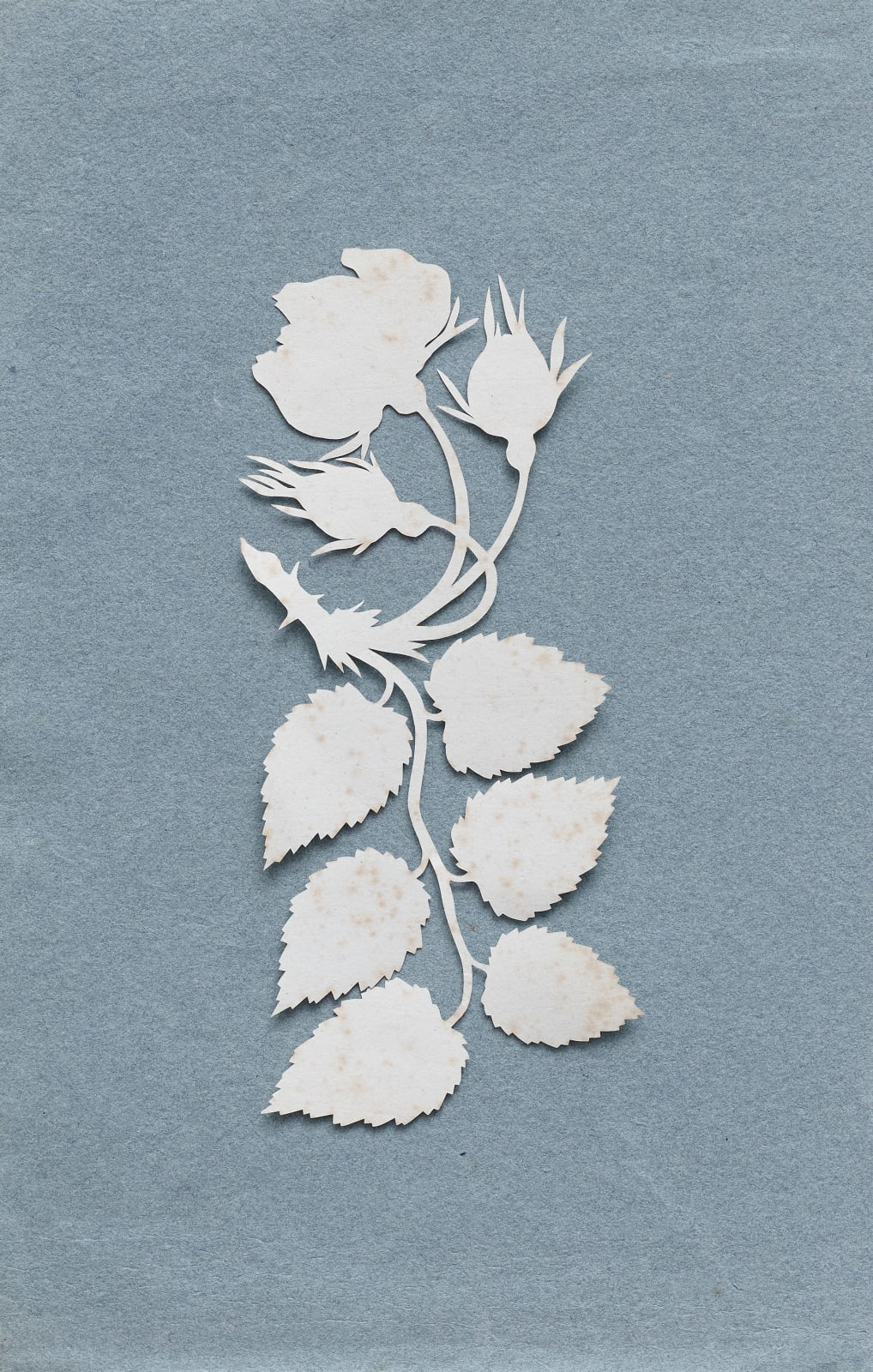Philipp Otto Runge (1777–1810)
15 x 9¾ inches (38 x 24.8 cm. primary support)
Caspar David Friedrich and Philipp Otto Runge are regarded as the leading painters of German Romanticism. Born in Wolgast near the Baltic Sea, Runge struggled with frail health throughout his life, having contracted tuberculosis at a young age. Nevertheless, he studied painting at the Copenhagen Academy, following closely in the footsteps of Friedrich. Runge died of tuberculosis at the age of thirty-three. After his death, his wife donated much of his oeuvre to the Hamburger Kunsthalle, making his work rare on the art market.
As a sickly child, often confined to home, Runge learned the art of silhouette cutting from his mother. During his brief career, his practice evolved from standard portrait profiles and multifigured vignettes to intricate botanical studies. In nature, the mystical minded Runge found religious revelation. His paper cut-outs abstract and idealize the particularities of each species, expressing the unity of the cosmos.
Runge’s cutouts, or Scherenschnitte, are remarkable for their freehand execution. Without preliminary sketches, he claimed his scissors had become an extension of his fingers, allowing him to capture the essence of plants with extraordinary precision. Working in simple white paper—often set against a blue background he associated with divinity and the night—Runge synthesized form and meaning, inspiring Matisse, who similarly explored the expressive potential of cut paper.
Created in the early 1800s, Runge’s cutouts predate the invention of photography by several decades. These delicate silhouettes capture the essence of nature in ways that foreshadow the visual precision of photographic imagery. At a time when photography was still a distant innovation, Runge’s cutouts served as one of the most immediate and intimate ways of preserving fleeting natural forms.
Provenance
Otto Speckter (1807–1871), Hamburg, thence by decentPrivate sale, Karl & Faber, Munich, May 2015
Private collection, United States
Literature
Cornelia Richter, Philipp Otto Runge. Ich weiß eine schöne Blume. Werkverzeichnis der Scherenschnitte, Munich 1981, no. 176Natalja Mischenin, “Pflanzenscherenschnitte”, in: Markus Bertsch et al. (eds.), Kosmos Runge. Der Morgen der Romantik, Hamburger Kunsthalle, Munich 2010, pp. 360–362



